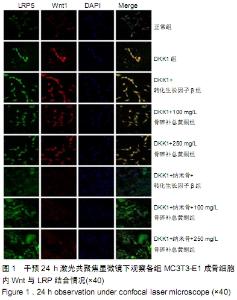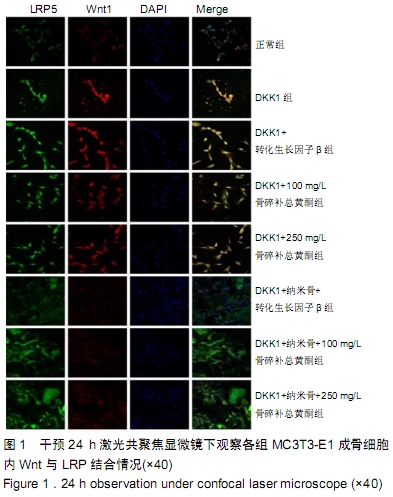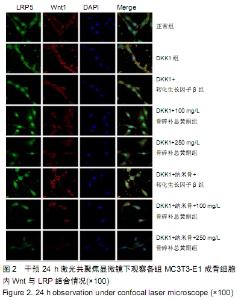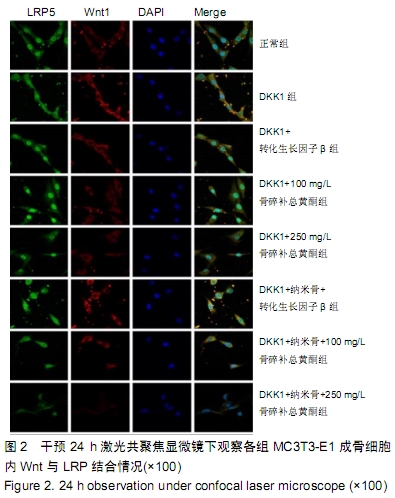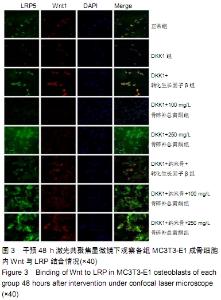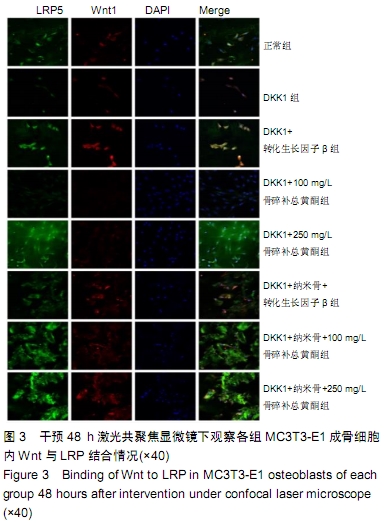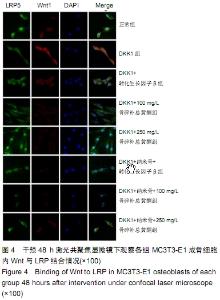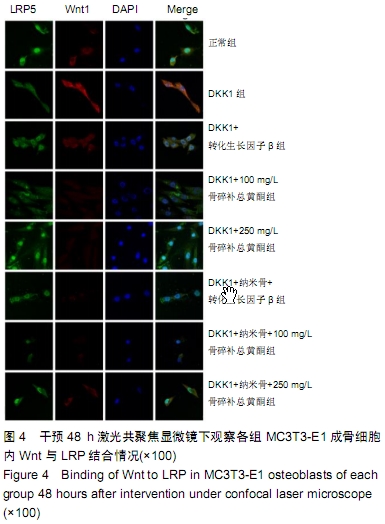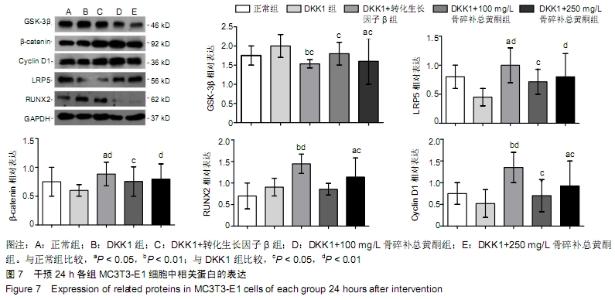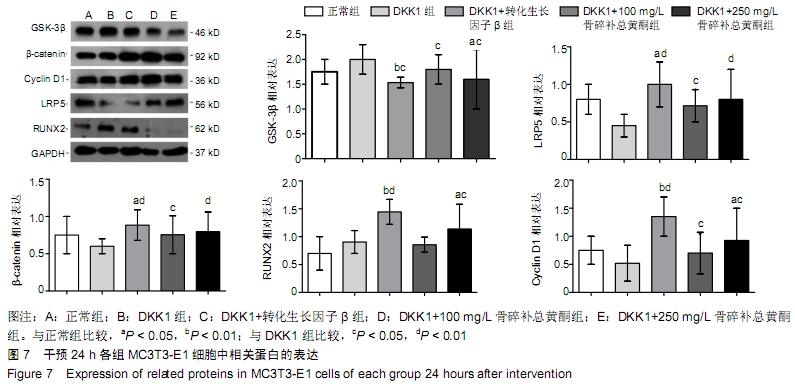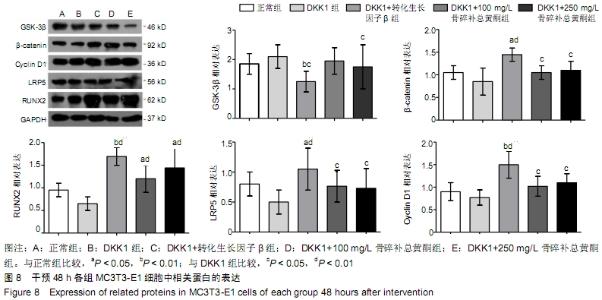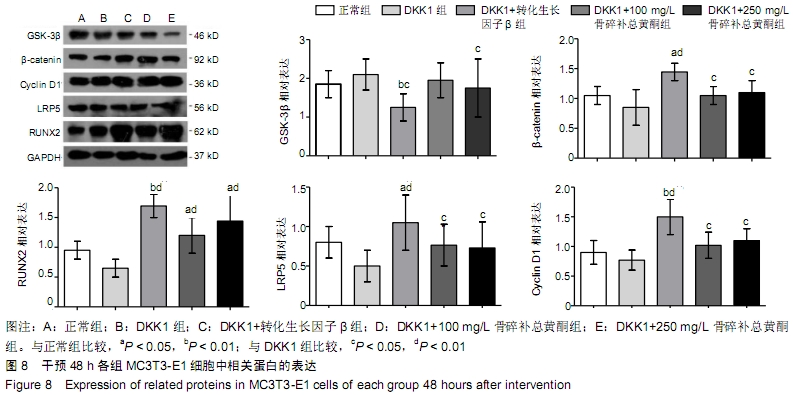[1] 巴音额古乐,金鸿宾.单味中药促进骨愈合实验研究进展[J].内蒙古中医药,2017,36(5):126-128.
[2] 张叶,崔元璐.中药在干细胞增殖和组织工程中的应用[J].中国组织工程研究,2016,20(28):4243-4249.
[3] 李晋玉,赵学千,孙旗,等.骨碎补总黄酮的实验及临床研究概况[J].中国骨质疏松杂志,2018,24(10):1357-1364.
[4] 冯庆玲,崔福斋,张伟.纳米羟基磷灰石胶原骨修复材料[J].中国医学科学院学报,2002,24(2):124-128.
[5] 李晋玉,俞兴,姜俊杰,等.骨碎补总黄酮联合纳米骨材料诱导MC3T3-E1细胞的成骨分化及其机制[J].中国组织工程研究,2019, 23(18):2888-2893.
[6] WESTENDORF JJ, KAHLER RA, SCHROEDER TM. Wnt signaling in osteoblasts and bone diseases. Gene. 2004;341: 19-39.
[7] PETRIE TA, RAYNOR JE, REYES CD, et al. The effect of integrin-specific bioactive coatings on tissue healing and implant osseointegration. Biomaterials. 2008;29(19):2849-2857.
[8] 金合,俞兴,徐林.可注射骨修复材料结合骨碎补总黄酮修复极量颅骨缺损的实验研究[J].生物骨科材料与临床研究, 2012,9(1):26-29.
[9] BRANDOFF JF, SILBER JS, VACCARO AR. Contemporary alternatives to synthetic bone grafts for spine surgery. Am J Orthop (Belle Mead NJ). 2008;37(8):410-414.
[10] KARGER C, KISHI T, SCHNEIDER L, et al. Treatment of posttraumatic bone defects by the induced membrane technique. Orthop Traumatol Surg Res. 2012;98(1):97-102.
[11] 李晋玉,俞兴,徐林,等.中药提取物AFDR对IBRC材料复合ADMSCs应用于兔腰椎横突间融合的影响[J].世界中医药, 2013,8(12): 1454-1457.
[12] 史岩,马秋野,喻一东,等.骨碎补总黄酮促进骨质疏松性骨折愈合中参与Wnt/β-catenin信号通路的初步研究[J].中医药学报,2018,46(2): 49-52.
[13] XU T, WANG L, TAO Y, et al. The Function of Naringin in Inducing Secretion of Osteoprotegerin and Inhibiting Formation of Osteoclasts. Evid Based Complement Alternat Med. 2016;2016: 8981650.
[14] SONG SH, ZHAI YK, LI CQ, et al. Effects of total flavonoids from Drynariae Rhizoma prevent bone loss in vivo and in vitro. Bone Rep. 2016;5:262-273.
[15] ZHOU F, HAN S, ZHOU N, et al. Effects of modified Shu-Gan-Liang-Xue decoction combined with anastrozole on osteoblastic proliferation and differentiation of MC3T3-E1 cells. Mol Med Rep. 2015;11(3):1639-1646.
[16] 刘伟,赵劲民,苏伟,等.骨碎补总黄酮可促进兔骨髓间充质干细胞的增殖和分化[J].中国组织工程研究与临床康复, 2011,15(32):6021-6026.
[17] 舒晓春,刘君静,朱丹华,等.不同浓度的骨碎补总黄酮对大鼠骨髓间充质干细胞向成骨细胞分化的影响[J].中国病理生理杂志, 2010, 26(7):1261-1264.
[18] SONG S, GAO Z, LEI X, et al. Total Flavonoids of Drynariae Rhizoma Prevent Bone Loss Induced by Hindlimb Unloading in Rats. Molecules. 2017;22(7):E1033.
[19] 王清滢,章轶立,谢雁鸣,等.骨碎补总黄酮治疗绝经后骨质疏松症的Meta分析[J].中国骨质疏松杂志,2019,25(4):465-471.
[20] 李树源,周琦石,周宏亮,等.强骨胶囊辅助诱导膜技术治疗感染性骨髓炎并骨缺损临床观察[J].山东医药,2019,59(19):73-76.
[21] 翟景艳.强骨胶囊治疗老年Colles骨折术后的临床疗效[J].中国民康医学, 2017,29(12):53-54.
[22] 宋敬锋,梁春雨,刘昊,等.强骨胶囊对老年股骨头近段骨折延迟愈合患者血清BMP-2及IGF-1水平的影响[J].现代生物医学进展, 2017, 17(7): 1255-1258.
[23] 王鑫众,张利恒,罗浩,等.强骨胶囊与骨瓜提取物注射液治疗骨质疏松性股骨骨折的价值分析[J].中国药物经济学, 2019,14(1):44-47.
[24] 李慧英,孟东方,阮志磊.骨碎补总黄酮对激素性股骨头坏死血钙、血磷及空骨陷窝率的影响[J].中华中医药杂志, 2016,31(12): 5352-5354.
[25] 阮志磊.骨碎补总黄酮对激素性股骨头坏死的实验研究[D].郑州:河南中医学院,2015.
[26] 杨成.钻孔减压术配合强骨胶囊治疗成人股骨头缺血性坏死疗效观察[J].实用中医药杂志,2017,33(5):493-494.
[27] BENNETT CN, LONGO KA, WRIGHT WS, et al. Regulation of osteoblastogenesis and bone mass by Wnt10b. Proc Natl Acad Sci U S A. 2005;102(9):3324-3329.
[28] BABIJ P, ZHAO W, SMALL C, et al. High bone mass in mice expressing a mutant LRP5 gene. J Bone Miner Res. 2003;18(6): 960-974.
[29] GAUR T, LENGNER CJ, HOVHANNISYAN H, et al. Canonical WNT signaling promotes osteogenesis by directly stimulating Runx2 gene expression. J Biol Chem. 2005;280(39): 33132-33140.
[30] TSUBOI R, SASAKI JI, KITAGAWA H, et al. Development of a novel dental resin cement incorporating FGF-2-loaded polymer particles with the ability to promote tissue regeneration. Dent Mater. 2018;34(4):641-648.
[31] TÜYSÜZ B, BURSALI A, ALP Z, et al. Osteoporosis- pseudoglioma syndrome: three novel mutations in the LRP5 gene and response to bisphosphonate treatment. Horm Res Paediatr. 2012;77(2):115-120.
[32] KATO M, PATEL MS, LEVASSEUR R, et al. Cbfa1-independent decrease in osteoblast proliferation, osteopenia, and persistent embryonic eye vascularization in mice deficient in Lrp5, a Wnt coreceptor. J Cell Biol. 2002;157(2):303-314.
[33] TAN R, FENG Q, JIN H, et al. Structure and biocompatibility of an injectable bone regeneration composite. J Biomater Sci Polym Ed. 2011;22(14):1861-1879.
[34] SCHETT G, ZWERINA J, DAVID JP. The role of Wnt proteins in arthritis. Nat Clin Pract Rheumatol. 2008;4(9):473-480.
[35] AGHOLME F, LI X, ISAKSSON H, et al. Sclerostin antibody treatment enhances metaphyseal bone healing in rats. J Bone Miner Res. 2010;25(11):2412-2418.
[36] 李佩芳.骨碎补总黄酮对BMSCs成骨分化过程中Wnt/β-catenin信号通路的影响[D].广州:中山大学,2011.
[37] MA X, LV J, SUN X, et al. Naringin ameliorates bone loss induced by sciatic neurectomy and increases Semaphorin 3A expression in denervated bone. Sci Rep. 2016;6:24562.
|
